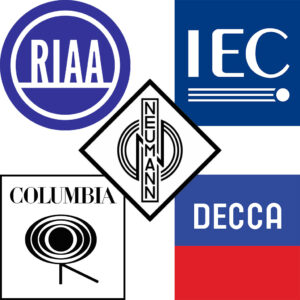For the record
Matt polished black. Super quiet noise floor.
Our phono stage circuitry uses only the best audiophile components. Computer matched op-amps, high-gain bi-polar output transistors to Nichicon audio-grade capacitors. And much more.
The iPhono3 Black Label sounds stellar. Hear into your LP.
Silent nights in
With a stunning, super-low 85dB noise floor (per Stereophile standard) the iPhono3 Black Label is out there. One of the quietest phono stages. Period.
Like any good phono stage, it amplifies the signal, not the noise. The whisper-quiet noise floor is there for any home audio system to discern. Take it for a test drive from the comfort of your favourite listening chair.
Exacting equalisation
Precise EQ curve and explosive 108dB dynamic range. Your listening room becomes a concert hall.
The AMR PH-77, the $12,000 larger sibling with 23 equalisation curves, remains the vinyl benchmark to this day. Trickle-down tech used in the iPhono3 Black Label means it features the 6 most popular stereo EQ curves.
Try the infamous 1812 Overture ‘torture test’. Won’t be the same again. The iPhono3 Black Label will have you trying ‘just one more LP’ into the wee, small hours.
Set and forget
Your pickup (stylus) has been lovingly crafted. Whether it’s MM or MC, no two cartridges are identical in performance.
The iPhono3 Black Label, like the AMR PH-77 from which it descends, enables you to set the precise load/gain for the cartridge you have. Squeeze every last drop of performance out of your precious pickup.
Visit our iPhono Calculator to assist.
Set just once. Sit back. Enjoy.
Spec’d to thrill
Beneath the modest footprint of the iPhono 3 Black Label are Class A TubeState and DirectDrive Servoless technologies. Specially developed by AMR for iFi audio.
All underpinned by some quite special audiophile components from Burr-Brown, TDK and Nichicon. To name but a few.
With such dedicated circuitry and devoted components, it has a whisper-quiet noise floor and measured THD of an incredible <0.005%.

X-Men
The iPhono3 Black Label is special. It should be powered by something special.
It comes with the iPower X, the very latest in power supply technology.
iPhono3 Black Label + iPower X = Super Duo.
A phono stage, also called a phono pre-amp, provides the connection between the record cartridge/pickup (stylus) and the amplifier.
Turntables cartridges output a very small signal. This signal needs amplifying up to several hundred times the original size before it is loud enough for your amplifier. A phono stage increases the signal level from millivolts to volts.
When vinyl was the standard for audio recording, the phono stage was built-in to receivers and amps, allowing direct connection of a turntable. These days most receivers and amps do not contain a phono stage so a separate unit is needed.
Computer-matched complementary planar high gain bi-polar input transistor pairs.
Sound complicated? Basically, it’s a labour-intensive process which lowers input noise by 6dB. The measured noise floor (as per Stereophile) is 85dB on MC/MM which is quite phenomenal and means the iPhono3 Black Label can go toe-to-toe with other far costlier phono stages.
So, by using this computer matching method we get max performance out of our phono stage.
An EQ curve simply works by allowing the user or LP manufacturer to boost or cut particular frequencies as they wish, and therefore ‘shape’ the character of the sound/tracks they are applying it to.
At the introduction of the Long Play record (LP) in 1948, most record companies implemented their own particular equalisation curves and continued to experiment with equalisation in order to extract the best performance from the new medium. This led to a baffling array of different and incompatible equalisation curves being applied worldwide.
The most popular are RIAA, Columbia, and DECCA.
See our Tech Note for more on the story on EQ curves.
There are different kind of phono stages – MM, MC and MM/MC.
MM = Moving Magnet cartridges. MC = Moving Coil cartridges.
On a MM cartridge, there is mounted a permanent magnet on the stylus cantilever. As the stylus traces the grooves, the magnet vibrates between two sets of fixed coils inside the cartridge. The moving (vibrating) magnet inside the fixed coils creates a tiny electromagnetic generator that produces the electrical music signal. The magnet move with the stylus.
On a MC cartridge, the coils are mounted on the stylus cantilever while the magnet is fixed. Here, the moving (vibrating) coils inside the fixed magnet form a tiny electromagnetic generator that produces the electrical music signal. The coils move with the stylus.
The vast variety of pickups means that in order to obtain the best sound, a wide range of loading options are required.
Some low output pickups require substantial ‘loading down’ to suppress mechanical resonances in their structure, while some high output pickups require the correct load capacitance to form a resonance at the right frequency to extend the high-frequency response.
No ready standards exist and getting the best out of your pickup means optimising the loading, often directly by changing the loading and listening and doing it again and again. Often as little differences as a few Ohm can have a notable impact in getting the system to sound ‘just right’.
Easy as 1, 2, 3…
1. Visit our unique phono calculator here.
2. Input your cartridge specs.
3. Follow the dip switch positions.
Using premium part equals low ESR (Equivalent Series Resistance), lower noise, exceptional transients, deeper, tighter, punchier bass and all round fantastic linearity.
Just all round bigger and bolder sonics.
Distortion is the alteration of the original shape (or other characteristics) of something. In our case, this means the alteration of the waveform of an information-carrying signal, such as the audio signal representing sound.
Total Harmonic Distortion (THD) measures the harmonic distortion present in a signal. In audio systems, lower distortion means the components in a loudspeaker, amplifier or microphone or other equipment produce a more accurate reproduction of an audio recording.
So, the lower the THD in a phono stage, the better it is.
The following are some of our suggested LPs and the precise EQ curve:
The original Mercury Living Presence series (Decca FFSS, Decca FFRR EQ)
The original Deutsche Grammophone Classical records (Decca FFSS, Decca FFRR, CCIR EQ)
The original Miles Davis records (Columbia EQ)
Verve Jazz records, with performers like Charlie Parker, Count Basie, Ella Fitzgerald, Nina Simone and The Righteous Brothers etc. (Columbia & AES EQ)
The original Dave Brubeck Quartet records (Columbia EQ)
A significant number of the original stereo Decca (Europe) records (Decca FFSS, Decca FFRR EQ)
Rectify high-frequency roll-off and excessive phase shift of all, including Neumann and Western Electric vinyl cutting lathes (Enhanced RIAA EQ)
The labels on our list also issued many records based on the RIAA equalisation as well.
This list is far from comprehensive but sheds some light on how the magical performance of such coveted recordings needs the correct EQ curve.


































